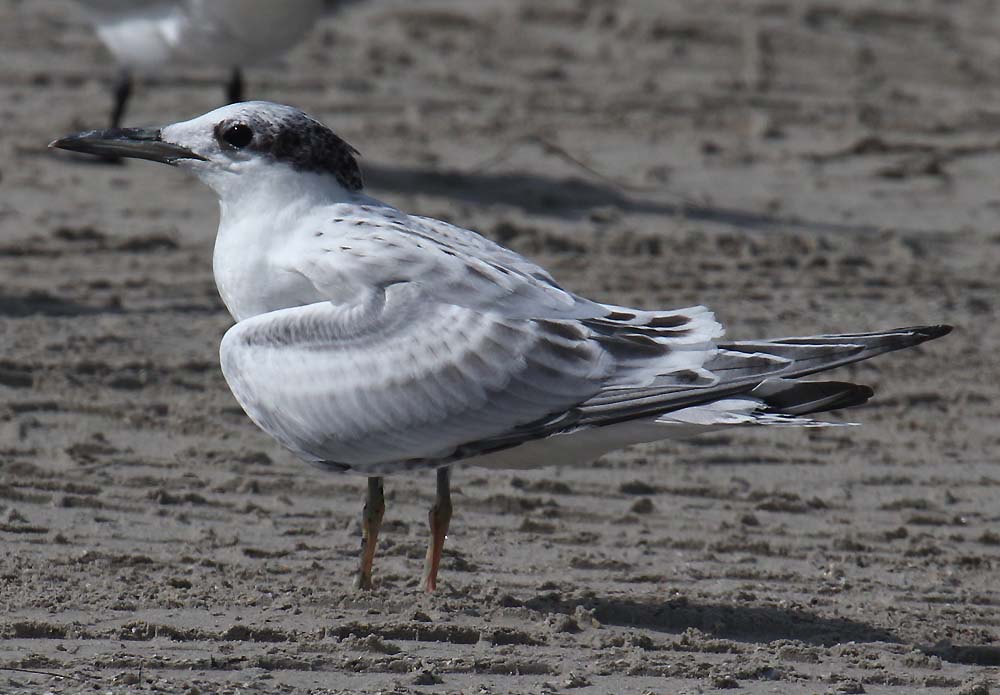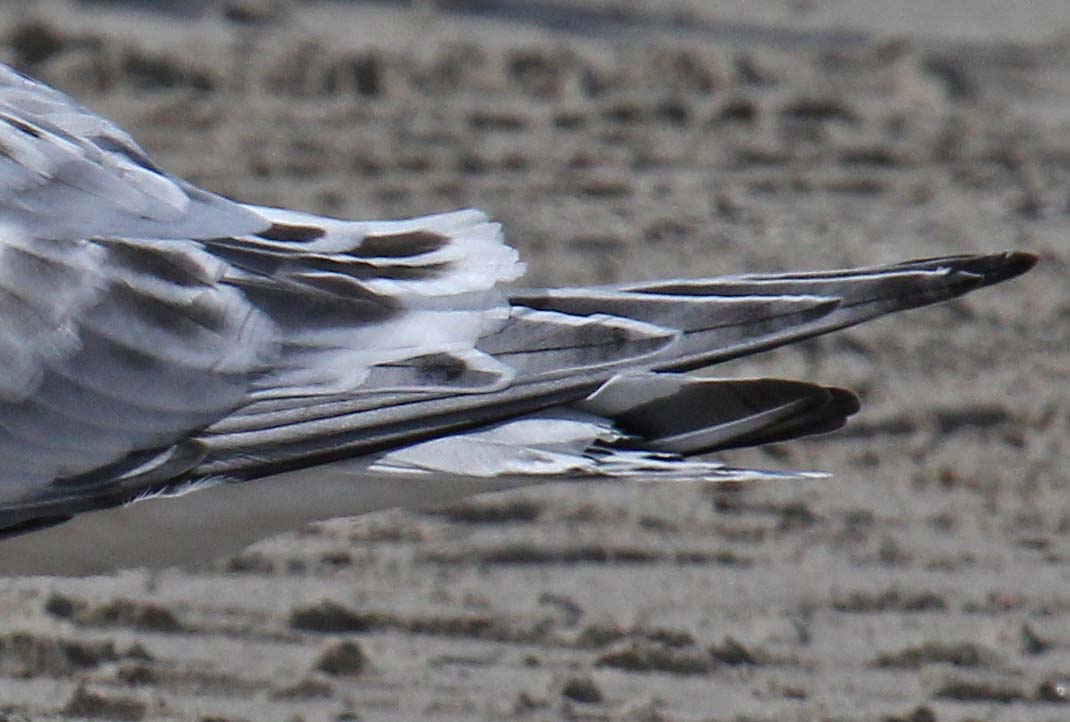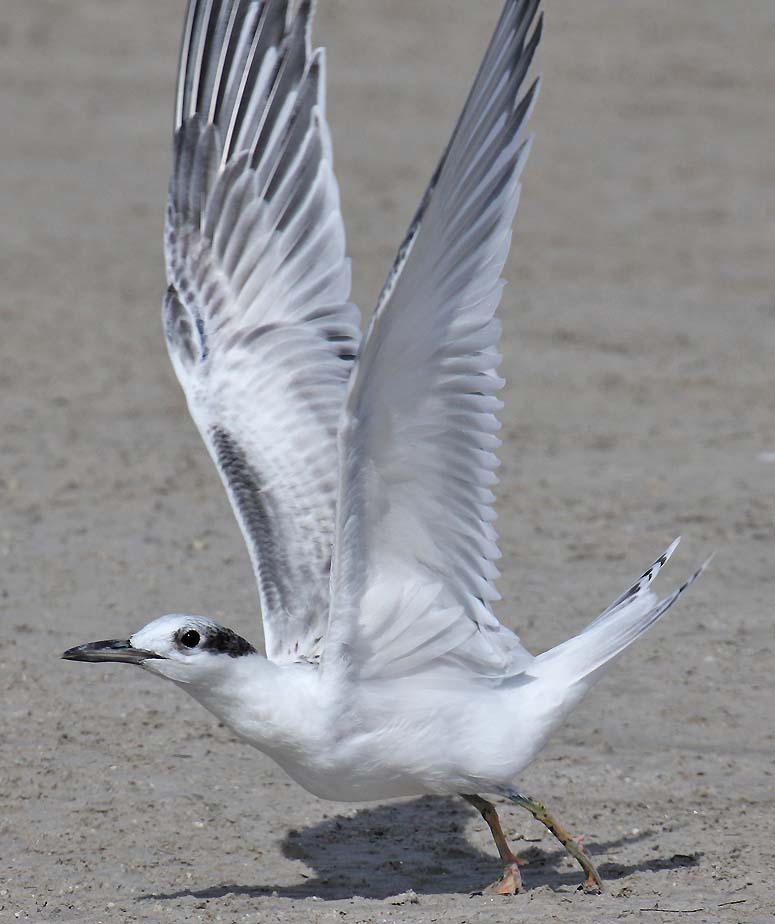
Sandwich Terns from central Texas:
In 2011 the British Ornithological Union split Sandwich Tern into two species: Sandwich Tern Thalasseus sandvicensis, in Europe/Africa, and Cabot's Tern Thalasseus acuflavida, including ssp. eurygnatha, in the Americas.
An article describing the differences between Sandwich and Cabot's Terns was published in 2007, and one of the key features mentioned therein is the pattern of the white fringing at the tip of the outer primaries.
Subsequently at least two Sandwich Terns (henceforth referring only to the European taxon) have been reported from North America, including a bird seen in Massachusetts that had been banded in the U.K. and one from Chicago. In both cases the birds were seen in late summer, and had worn outer primaries with all of the white edging worn away. The pattern of this white fringe is implied by the contours of the dark centers, and the evident hook shape at the tip of some of these primaries has been offered as evidence that the primaries once had a pattern strongly indicative of Sandwich Tern rather than Cabot's Tern.
A point of reference: when at rest, and with no active growth in the relevant feathers, the tip of P5 falls underneath (or slightly beyond) the tip of the longest tertial.
I created this page to caution birders when using this field mark.
From looking at my photos of Cabot's Terns on the Texas coast, I feel that a small but not tiny number can have fairly good white inner fringes on P6 - as thick as on many Sandwich Terns - with a few of such birds also having a reduced version on P7. In fresh plumage there is still a difference compared to Sandwich Tern, in that these feathers lack an obvious extension of this inner white fringe on to the actual tip of the feather. The problem comes with worn feathers when all the white fringes have worn away; in this circumstance the hooked tip of P6 (P7) on these Cabot's Terns looks identical to that of typical Sandwich Terns since any white tip indicative of Sandwich Tern is missing.
I have also noted a tendency for the tip of P10 to look somewhat hooked on worn feathers for Cabot's, thus I would focus on looking for the hooked tip to P8 (P9) in conjunction with the inner P6 and P7.
Here are some examples from Texas - keep in mind that these are gleaned from a fairly small sample of my own photos:
1) August 11, 2008: small hook on P6 and P7:
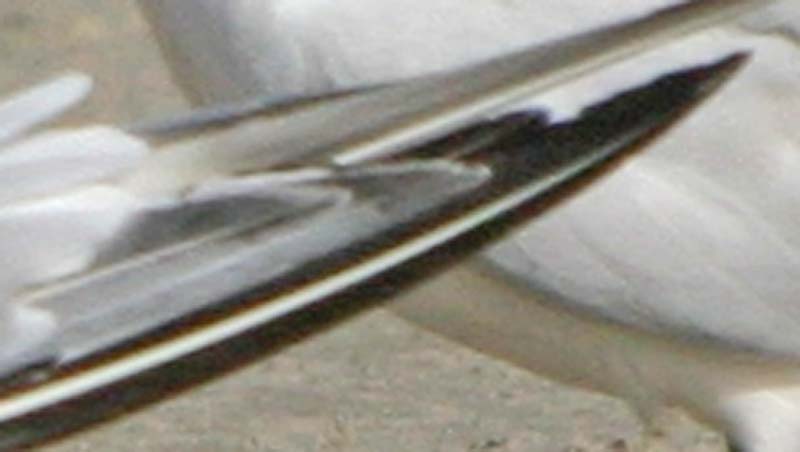

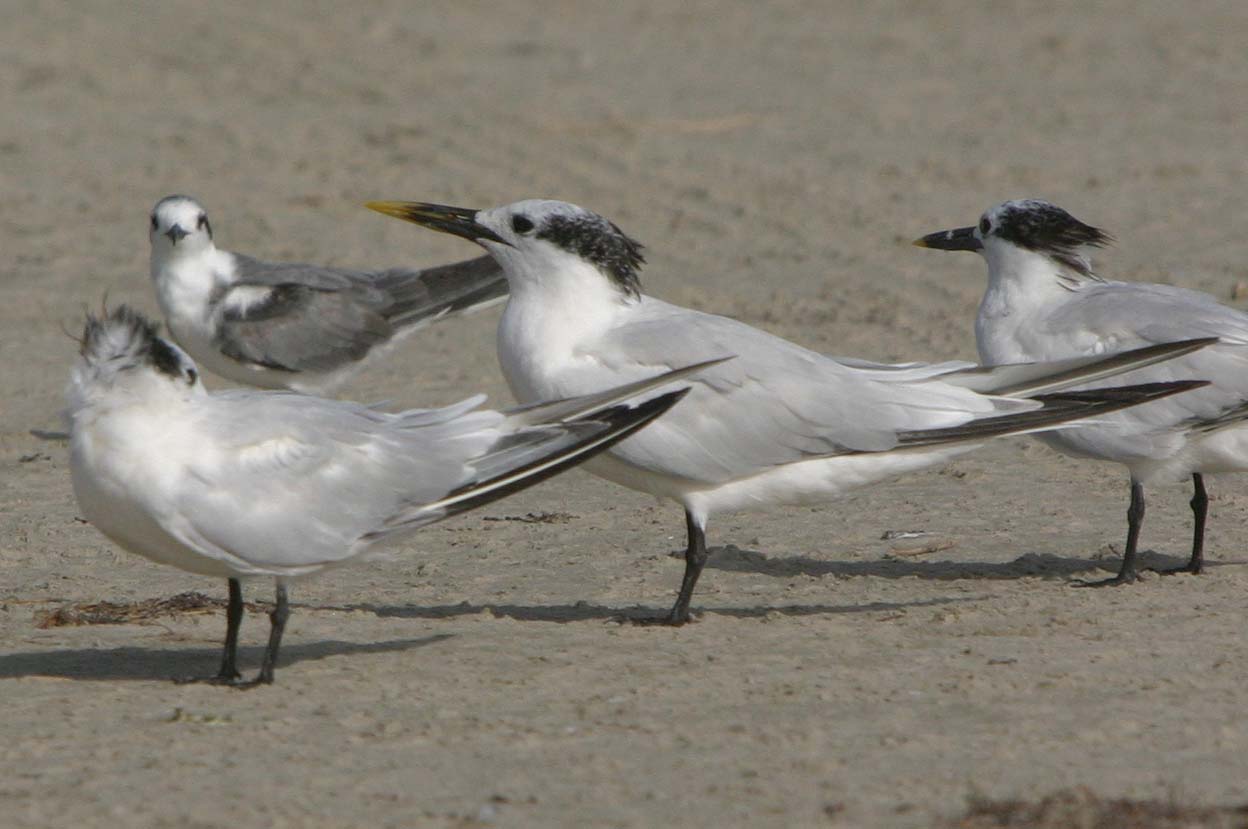
- here is an enlargement of the unusual bird back and to the right of the main bird; note the strongly freckled rear crown/nape - supposedly a good feature for Sandwich Tern:
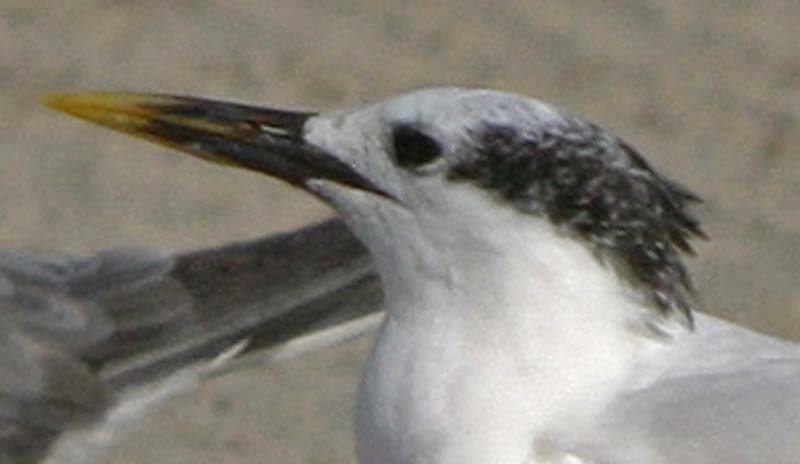
2) September 20, 2008; when worn, P6 and to a lesser extent P7 would show a hook at the tip (note that a strong hook to P5 is fairly frequent in my sample of Cabot's Terns):

3) March 30, 2011: P6 with a strong tip hook:
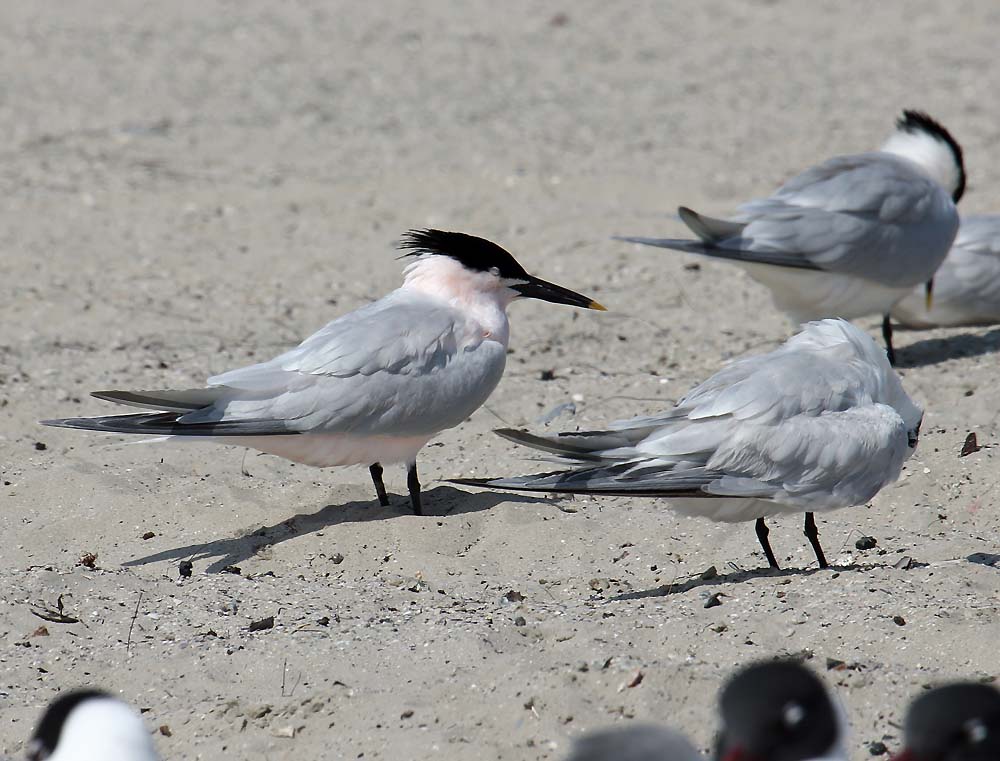
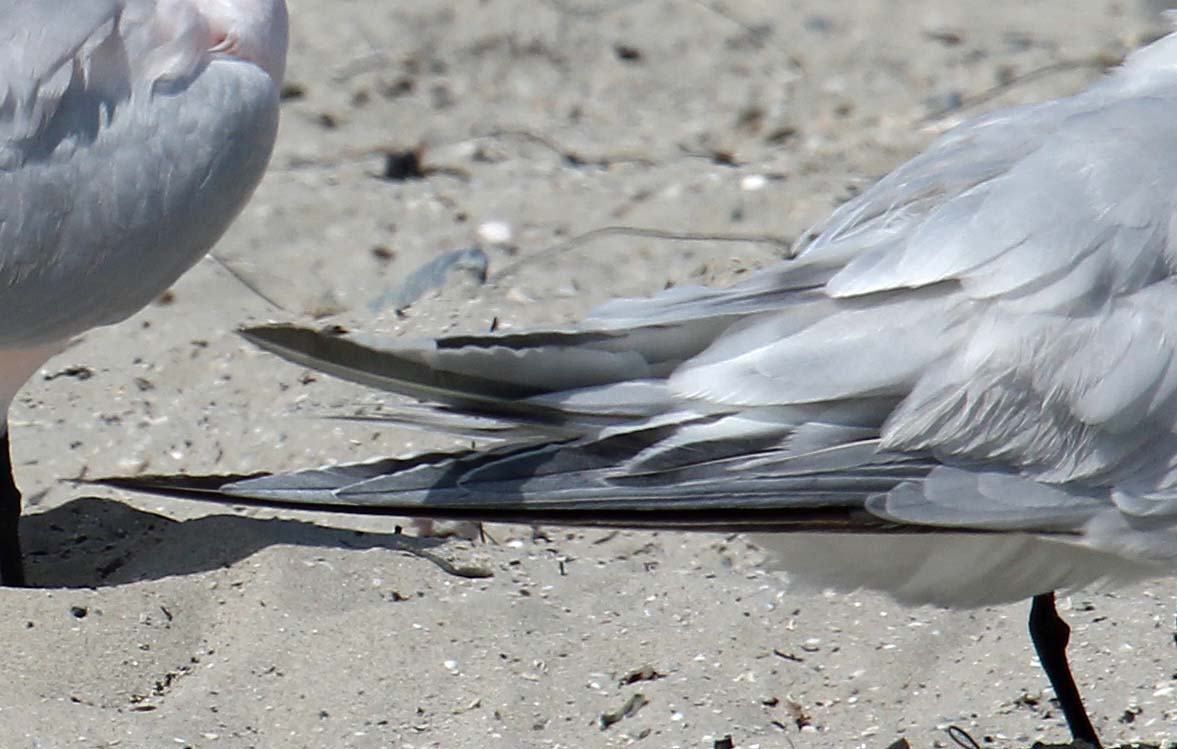
4) September 30. 2011: similar to 2) above:
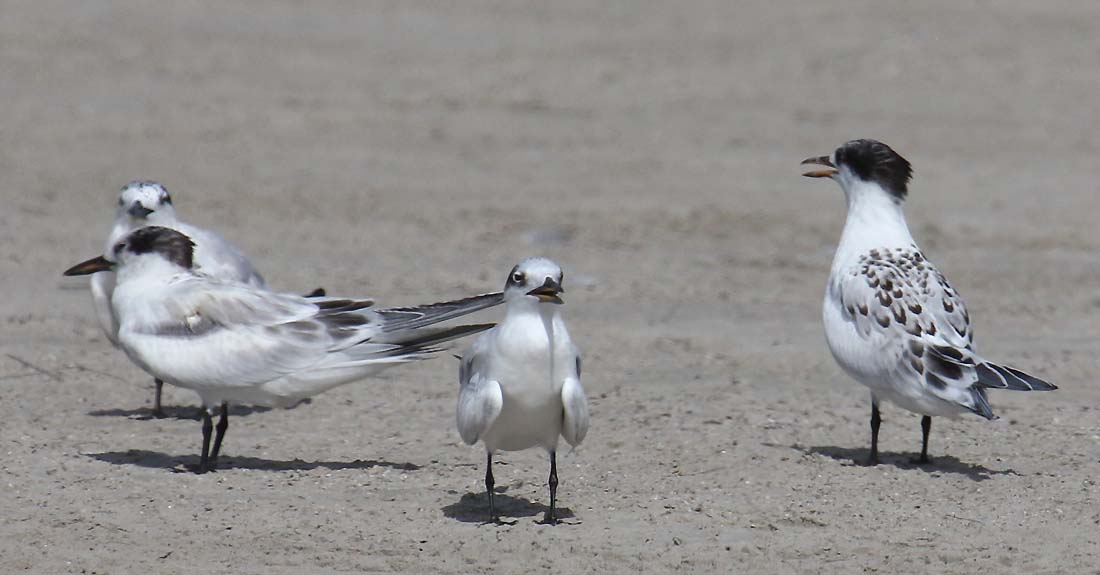
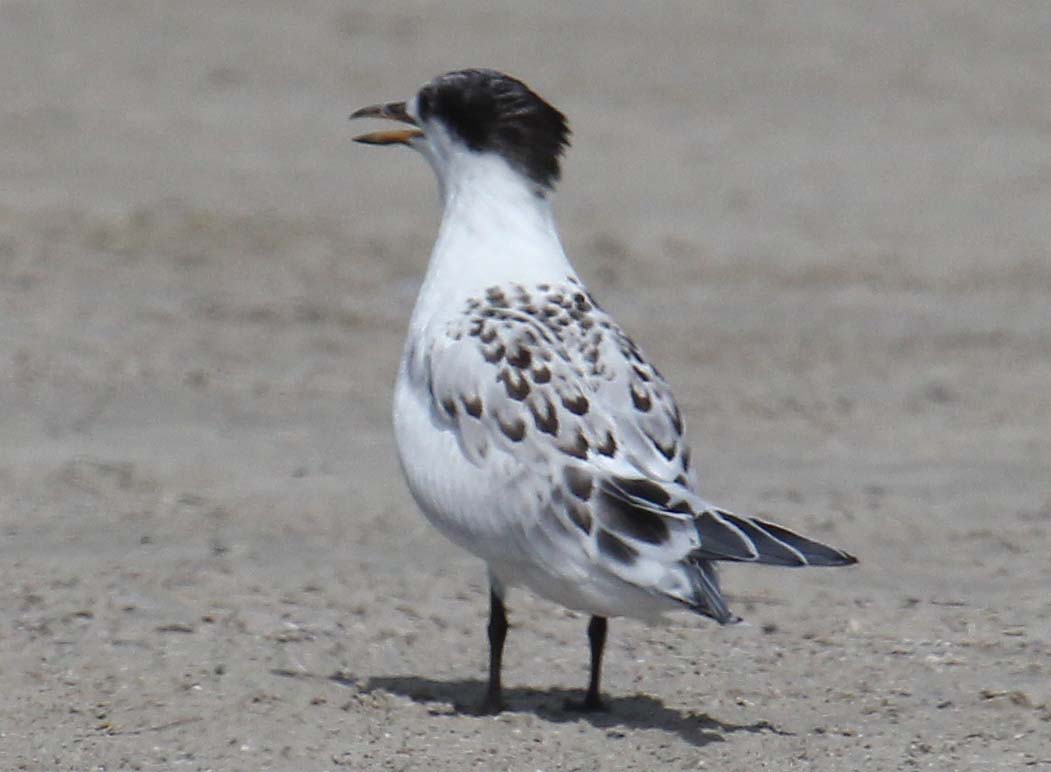
5) September 30, 2011: Strong P6 hook, P7-P9 hard to assess, but P10 gives the appearance of having a hook - ?:
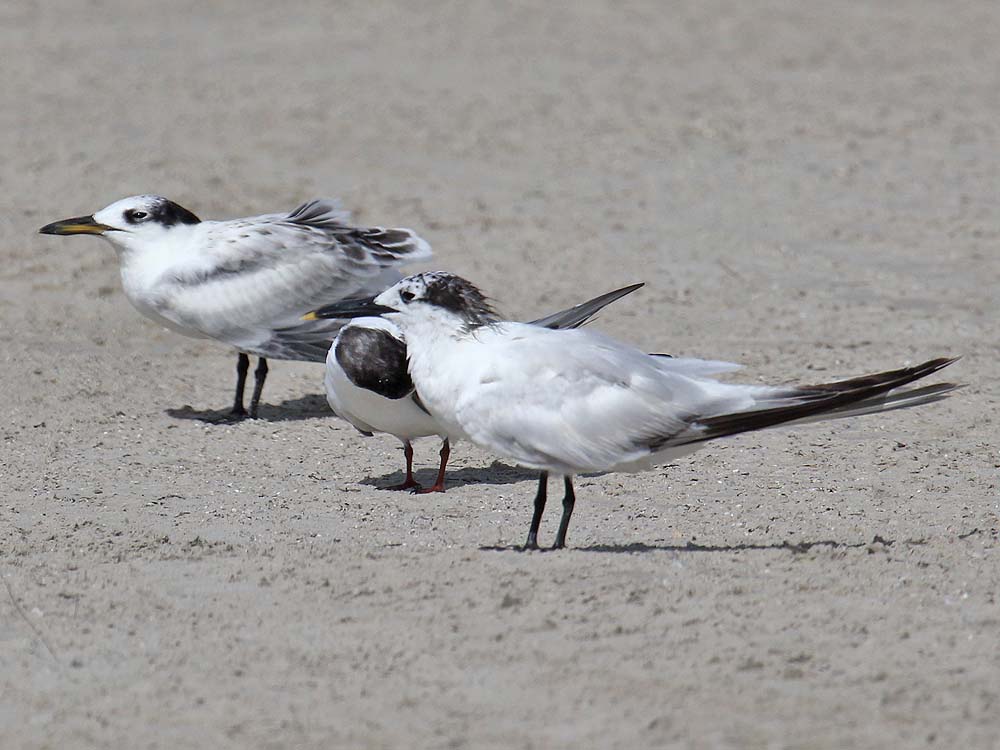
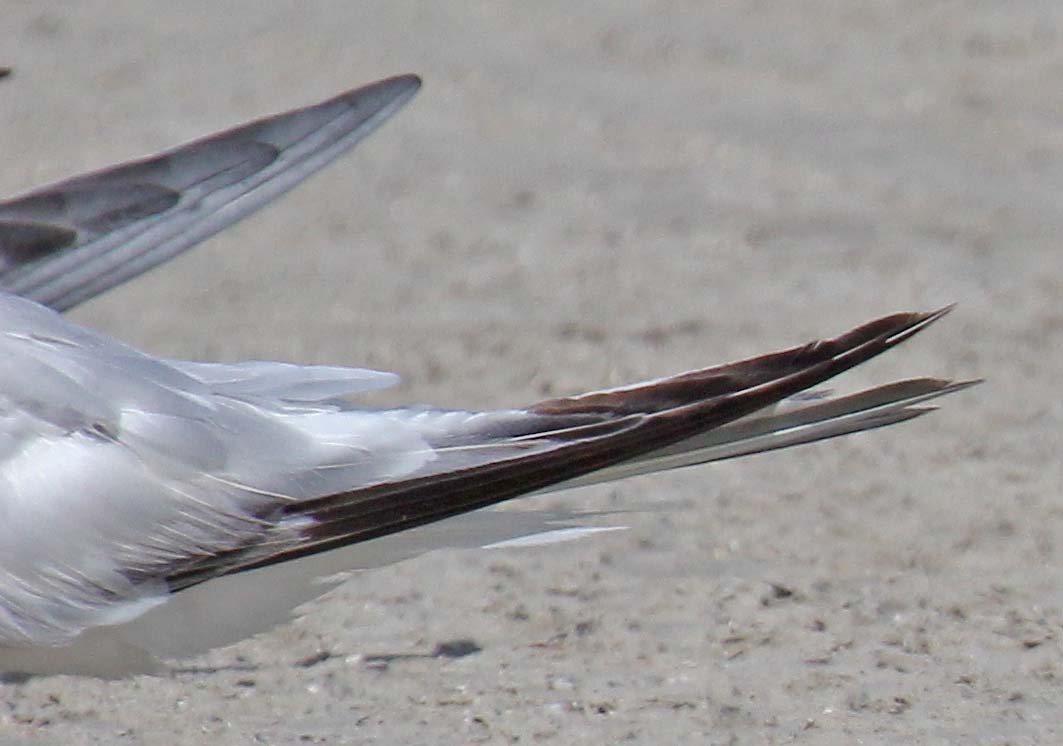
6) September 30. 2011: fairly strong P6 hook, and small P7 hook:
